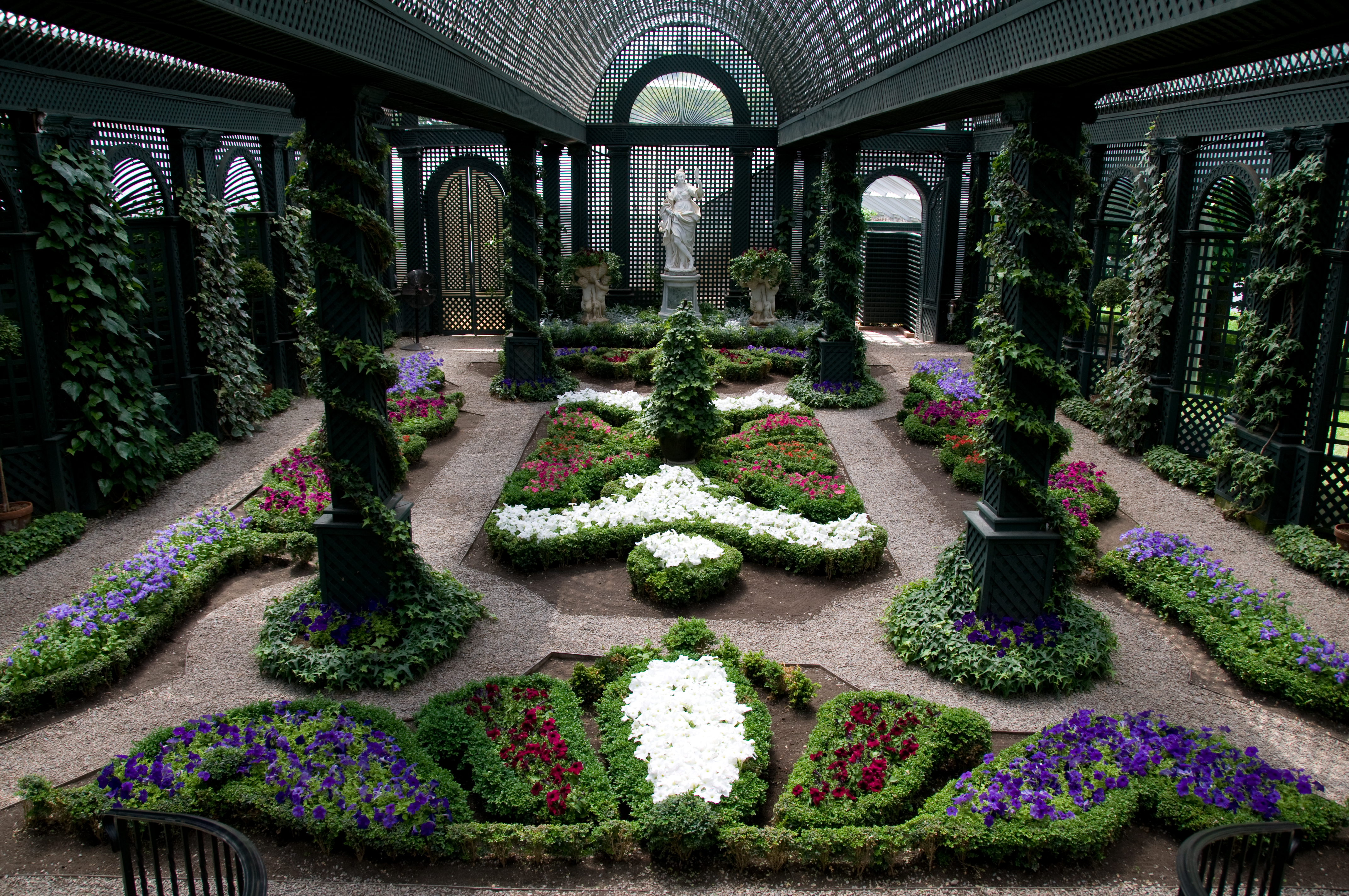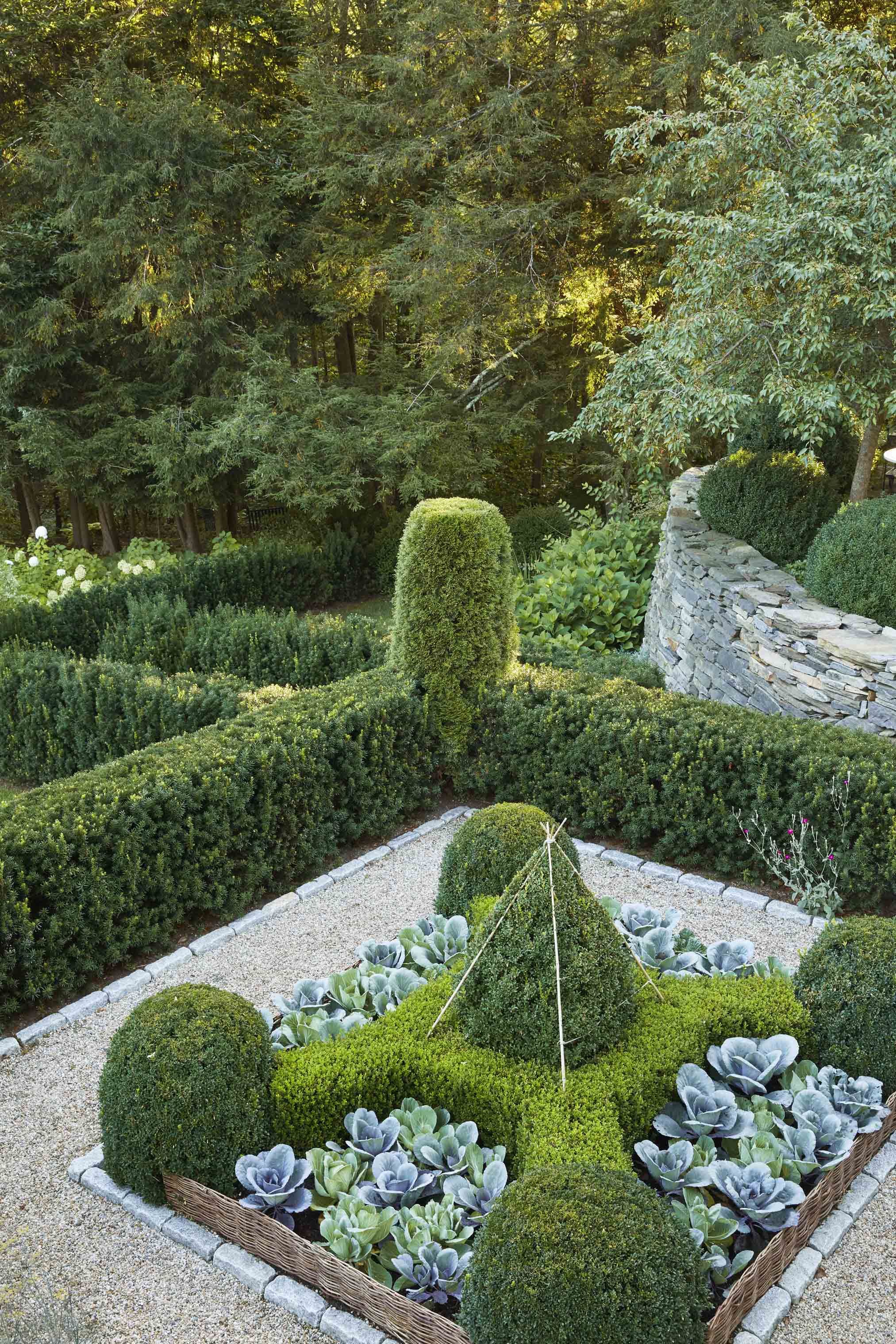Table Of Content

As fashions changed, many parterres de broderie of stately homes had to give way in the 19th century to English landscape gardens and have not been reinstated. Most of the trees at Versailles were taken from the forest; they included hornbeam, elm, linden, and beech trees. Large trees were dug up from the forests of Compiègne and Artois and transplanted to Versailles. Vintage pottery (like vases and urns), and weathered stone planters are great ways to add interesting details to a French garden.
Sun-drenched Provençale country gardens
Adopted in France, the concept was perfected, and other countries began using this type of landscaping. If the property is small, and you cannot add minor architectonic elements or other items, consider arranging a few flowerbeds or picking small colorful shrubs. Whether small or expansive, immaculate lawns continue the theme of ordered nature and create a nice balance against more elegant and intricate details.
A French garden - charming ponds and fountains
What’s more, you can use these two elements in one garden - but make sure they are located in separate areas. The design is all about perspective because French gardens are meant to be viewed from all angles, even above from a terrace or window of a chateau. Many famous French gardens, like the one at Chateau de Villandry, are overlooked by the main property.

Grouped Fruit Trees
Tour the Dreamiest Garden on the French Riviera - ELLE Decor
Tour the Dreamiest Garden on the French Riviera.
Posted: Thu, 07 Mar 2024 08:00:00 GMT [source]
In large country gardens, swimming pools commonly are paved with natural stone which meets lawn and flowering garden beds that can be bordered with low topiary hedges. Large garden pots such as Anduze urns look superb punctuating the corners of a swimming pool. Click on the images below to be inspired by the most idyllic French gardens.
Originally used as animal feeders or water troughs, they now lend themselves to becoming uniquely aged garden planters and water features. When selecting a fountain for your French country garden, consider the style that best complements the overall aesthetic. Opt for elegant and timeless designs, such as tiered or wall-mounted fountains, that evoke a sense of classic French elegance. Another classic design choice is a tiered fountain, with its elegant sculptural form and cascading water.
Is a French garden a good idea for your space?
Imagine rows of luscious tomatoes, fragrant basil, and vibrant roses, all coexisting in perfect harmony. It captures the essence of simplicity and elegance, effortlessly blending the beauty of nature with carefully curated design elements. Imagine strolling through a picturesque landscape, surrounded by vibrant flowers, neatly trimmed hedges, and a sense of timeless beauty.
French Garden Ideas (7 Choices For Plants, Statues, & More)
With their intricate designs and sturdy construction, these benches add a touch of old-world charm, creating an enchanting spot to sit and savor the beauty of your garden. Gravel or stone pathways between planting can serve as a picturesque journey through your garden, guiding visitors along designated routes and inviting exploration. Symmetry is a key element in the French style of garden design, and one way to achieve this is by introducing symmetrical planting beds. These beds should be carefully mirrored on either side of a central axis, creating a sense of harmony and visual balance. French gardens are meant for strolling, and gravel paths also define different areas. Gravel is used to separate elements like hedges, fountains, and parterre beds.
Address
Often in the shape of elegant squares, ovals, circles, or scrolls, these patterned planting beds complement not just the design, but can be seen from the main house or building. They are usually edged with low boxwood or other shrubbery that help define space and keep edges neat. Upon seeing this grand, French-style manse overlooking Greenwich Harbor, landscape designer Kathryn Herman instantly knew she wanted to marry French and American garden styles. The garden's series of outdoor rooms feature signature elements of a French garden like tuteurs and hornbeam hedges but embrace the wild beauty of the land. Rows of linden trees define the formal rooms flanking the home on one side while establishing the start of the home's romantic meadows on the other. If you'd love to incorporate a French-style garden into your landscape but don't want to dedicate the time to maintenance, consider a French country garden.
You’ll use green and white most often in the garden, as hedges, topiaries, and grass are green, while gravel, statues, and fountains are gray. They were designed for palaces and Chateau, who could afford to hire an army of gardeners to design and maintain it. But even if you’re managing everything yourself, you can make design choices that make it easier to maintain. You could opt for the more informal country style, choose hardier hedges, or choose a few trees for impact rather than long rows.
Such a romantic mix of trees and flowers in the above photo - note the Medici urns and outdoor chair. Apparently wildflowers and sea-hardy flowers bloom all year (even in winter), but cover gracefully and completely the natural landscape in spring. In winter it is possible to grow daisies, dandelion, shepherd's purse, fumitory and white dead nettle.
The architects of the garden à la française did not stop at applying the rules of geometry and perspective to their work. In the first published treatises on gardens, in the 17th century, they devoted chapters to the subject of how to correct or improve perspective, usually to create the illusion of greater distance. This created the illusion that the perspective was longer and that the garden was larger than it actually was. French garden design is intimidating at first glance because of all the maintenance that goes into it, but it’s surprisingly easy once you know which elements you need to include. No matter how much or how little space you have, these simple French-themed garden ideas will help create your own beau jardin.
Unglazed garden planters possess a unique charm as they thrive when exposed to the elements, gradually weathering and developing their distinctive patina over time. We take pride in the creation of extraordinary outdoor spaces that welcome you home and are a true investment in your lifestyle. We offer Conceptual Design and Project Management from start to finish, down to the details, including budgeting and purchasing. The Gardens of Versailles is the largest and most extravagant example of this garden style. Well, the French landscape style can still make a powerful statement in an average sized yard.
Position them in strategic spots to reflect the sun and sky, and enjoy the effect of subtly making your garden look more spacious. Homes in the French countryside often feature a little paved area for sitting down, relaxing, and enjoying the view. But you can also grow dense thickets of artichokes to create an u-shaped or rectangularly shaped courtyard area.
In addition to wide paths, plant sculptures and flowerbeds, you can add so-called small garden architecture. Whether seen in gravel paths, statuary, or terraces, stone is an easy element to incorporate into a French garden design. It provides balance against the plantings and underpinnings to the entire design.
Delightful and inspiring reading, so romantic the French influence, whether old or new, one of the few styles where very old and worn looks beautiful.So lovely. Thank you for sharing your beautiful pictures and your fountain of knowledge. Chez Pluie specializes in French antiques and vintage furniture and is exclusively online, please explore our range of French outdoor furniture via Chez Pluie. Explore our exquisite collection of French garden décor and add French flair to your garden. For further ideas we have wonderful collections of both classic antique olive jars and artisan made Biot jars.
Gardens were designed like buildings, with a succession of rooms which a visitor could pass through following an established route, hallways, and vestibules with adjoining chambers. They used the language of architecture in their plans; the spaces were referred to as salles, chambres and théâtres of greenery. On the ground were tapis, or carpets, of grass, brodés, or embroidered, with plants, and the trees were formed into rideaux, or curtains, along the alleys. In French garden design, the chateau or home was supposed to be the visual focal point. The different parts of the gardens were not harmoniously joined together, and they were often placed on difficult sites chosen for terrain easy to defend, rather than for beauty. All this was to change in the middle of the 17th century with the development of the first real garden à la française.

No comments:
Post a Comment